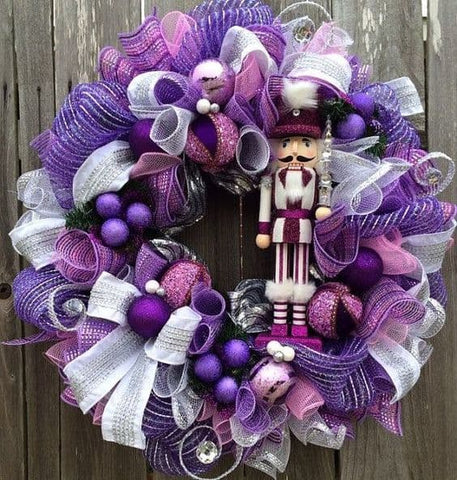
The Colours of Christmas: Traditional and Modern Palettes
As Christmas draws near, the world transforms into a beautiful, colourful display of lights, exuding joy and warmth. Christmas, in particular, is closely linked with its vibrant colour palette, where each shade carries a unique significance and history. In this article, we dive deeply into the origins of the colours associated with Christmas and explore more recent adaptations of these palettes.
The Traditional Christmas Colours: Red and Green

The combination of red and green has been a traditional colour scheme for Christmas for ages and carries deep historical roots and symbolic significance. These colours are believed to represent different aspects of the holiday season.
Red: The Colour of Love and Passion
Red, one of the most prominent colours of Christmas, is associated with warmth, love, and passion. The origin of red in Christmas dates back to ancient times when holly berries were used to symbolise the blood of Christ. The vibrant hue of red is also reminiscent of the warm hearth fires that have historically been central to Christmas celebrations. Red is the colour of Father Christmas’s iconic suit, representing the joyful and giving spirit of the holiday.
Green: The Color of Life and Renewal
Green symbolises the eternal life brought by Christ and the renewal of the spirit that Christmas represents. Evergreen trees, such as pines and firs, remain green throughout the winter, making them a powerful symbol of hope and life. Decorating Christmas trees with green foliage and ornaments reflects this symbolism.
White: The Color of Purity and Snow
White is a classic Christmas colour that symbolises purity and the pristine beauty of freshly fallen snow. It represents the purity of Christ in many cultures and is often used for religious decorations and in nativity scenes. White also symbolises the peaceful and serene aspect of the holiday season, as the world outside often transforms into a winter wonderland blanketed in white.
Gold: The Colour of Royalty and Celebration
Gold, with its shimmering brilliance, represents the world's light and the newborn King's majesty. It is often used in ornaments, decorations, and even in Christmas lights to celebrate the arrival of Christ. The association of gold with wealth and royalty reflects the significance and grandeur of the holiday. Using gold in ornaments, decorations, and Christmas lights is a way to celebrate the arrival of Christ.
Blue: The Colour of Advent and Hope

Blue has become increasingly popular in modern Christmas palettes, although it is less traditional. It often represents Advent, a period of anticipation and hope before Christmas. The calming and serene qualities of blue are also associated with the peaceful atmosphere of the holiday season.
Modern Christmas Colour Palettes
Many people still love the traditional Christmas colour scheme, but alternative palettes and modern adaptations are becoming increasingly popular. These contemporary colour choices allow for unique and creative interpretations of the holiday season. Below are six popular colour palettes:
- Silver and Blue: A Cool and Contemporary Choice
The combination of silver and blue creates a modern and elegant Christmas palette that evokes a winter wonderland and is often used for themes like "Frozen" or "Winter Wonderland" decorations. Silver represents the magical, icy touch of the season, while blue maintains a sense of calm and tranquillity.
- Pastels: Soft and Whimsical

Pastel colours, such as soft pinks, mint green, and light blue, have become increasingly popular for Christmas decorations. These colours add a whimsical and delicate touch to the holiday, creating a playful and charming atmosphere.
- Rustic Neutrals: A Cozy and Earthy Aesthetic
Rustic neutrals like brown, beige, and earthy greens have gained favour in recent years. These colours bring a cozy and homely feel to Christmas decor, often accompanied by natural elements like wood and burlap. The rustic theme reflects a simpler, more down-to-earth holiday celebration.
- Red and Gold: Timeless Elegance
The classic combination of red and gold remains timeless, but modern adaptations introduce new shades and materials. Deep burgundy, crimson, and rose gold add richness and luxury to traditional decor.
- Bohemian Brights: Eclectic and Playful

A Bohemian-inspired Christmas palette features vibrant and eclectic colours, often with a mix of patterns and textures. Bright pinks, greens, blues, and purples create a playful and free-spirited holiday theme.
- Minimalistic Monochromes: Understated Elegance
Minimalistic Christmas palettes typically revolve around a single colour, such as all-white or shades of grey. This approach emphasises simplicity and sophistication, allowing for a clean and understated holiday look.
In conclusion, the colours of Christmas have a rich and diverse history, with each colour carrying its own symbolic meaning and significance. Although traditional red and green remain the most popular colours during Christmas, modern adaptations and alternative palettes have allowed for a broader range of creative expressions. Whether you prefer to stick to tradition or experiment with contemporary colours, the key is to create a Christmas ambience that fills your home with joy, love, and the spirit of the season. So, let your imagination run wild and infuse your home with colours that resonate with your unique Christmas spirit.

Leave a comment